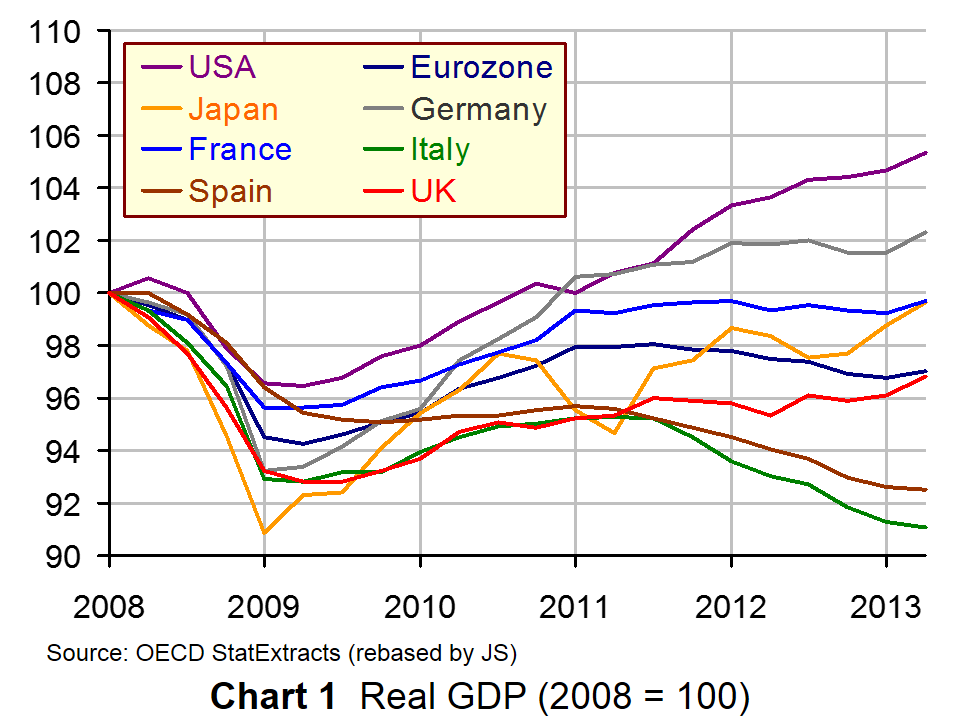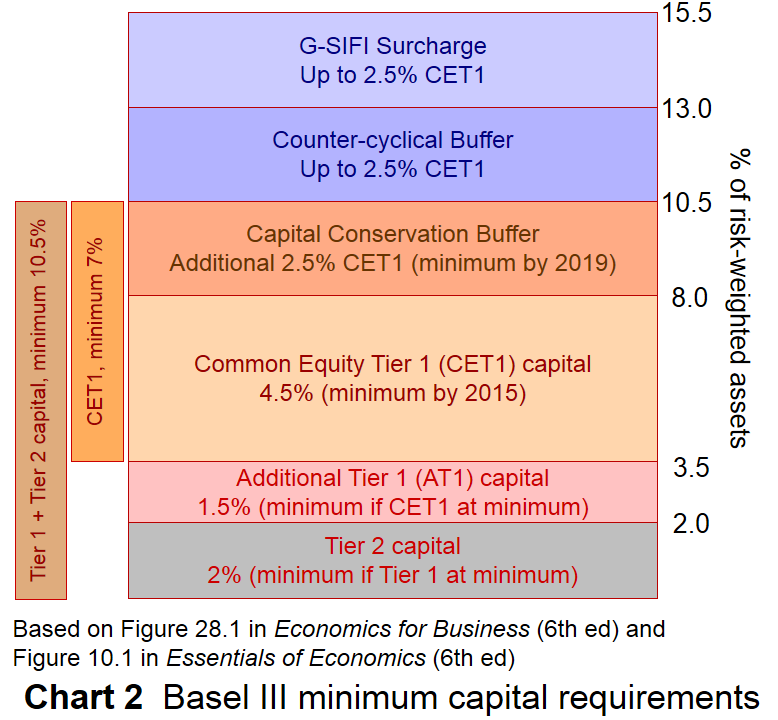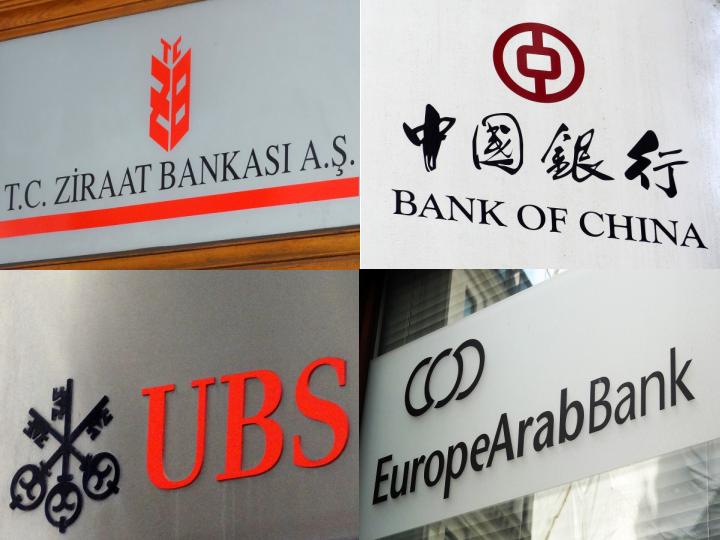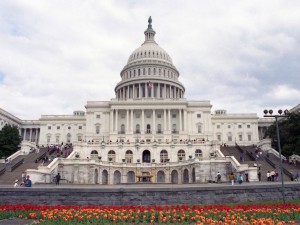 On 15 September 2008, Lehman Brothers, the fourth-largest investment bank in the USA, filed for bankruptcy. Although the credit crisis had been building since mid 2007, the demise of Lehmans was a pivotal event in the unfolding of the financial crisis and the subsequent severe recession in most developed economies. Banks were no longer seen as safe and huge amounts of government money had to be poured into banks to shore up their capital and prevent further bankruptcies. Partial nationalisation seemed the only way of rescuing several banks and with it the global financial system.
On 15 September 2008, Lehman Brothers, the fourth-largest investment bank in the USA, filed for bankruptcy. Although the credit crisis had been building since mid 2007, the demise of Lehmans was a pivotal event in the unfolding of the financial crisis and the subsequent severe recession in most developed economies. Banks were no longer seen as safe and huge amounts of government money had to be poured into banks to shore up their capital and prevent further bankruptcies. Partial nationalisation seemed the only way of rescuing several banks and with it the global financial system.
 A deep and prolonged recession followed (see Chart 1: click here for a PowerPoint). In response, governments pursued expansionary fiscal policies – at least until worries about rising government deficits and debt caused a lurch to austerity policies. And central banks pursued policies of near zero interest rates and subsequently of quantitative easing. But all the time debate was taking place about how to reform banking to prevent similar crises occurring in the future.
A deep and prolonged recession followed (see Chart 1: click here for a PowerPoint). In response, governments pursued expansionary fiscal policies – at least until worries about rising government deficits and debt caused a lurch to austerity policies. And central banks pursued policies of near zero interest rates and subsequently of quantitative easing. But all the time debate was taking place about how to reform banking to prevent similar crises occurring in the future.
Solutions have included reform of the Basel banking regulations to ensure greater capital adequacy.  The Basel III regulations (see Chart 2) demand considerably higher capital ratios than the previous Basel II regulations.
The Basel III regulations (see Chart 2) demand considerably higher capital ratios than the previous Basel II regulations.
Other solutions have included proposals to break up banks. Indeed, just this week, the Lloyds Banking Group has hived off 631 of its branches (one sixth of the total) into a newly reformed TSB. Another proposal is to ring-fence the retail side of banks from their riskier investment divisions. In both cases the aim has been to avoid the scenario where banks are seen as too big to fail and can thus rely on governments to bail them out if they run into difficulties. Such reliance can make banks much more willing to take excessive risks. Further details of the new systems now in place are given in the Robert Peston article below.
But many critics maintain that not nearly enough has been done. Claims include:
• The Basel III rules are not tough enough and banks are still being required to hold too little capital.
• Rewards to senior bankers and traders are still excessive.
• The culture of banking, as a result, is still too risk loving in banks’ trading arms, even though they are now much more cautious about lending to firms and individuals.
• This caution has meant a continuing of the credit crunch for many small businesses.
• Higher capital adequacy ratios have reduced bank lending and have thus had a dampening effect on the real economy.
• The so-called ring-fences may not be sufficient to insulate retail banking from problems in banks’ investment divisions.
• Banks are not being required to hold sufficient liquidity to allow them to meet customers’ demands for cash in all scenarios.
• Banks’ reliance on each other still leaves a systemic risk for the banking system as a whole.
• Fading memories of the crisis are causing urgency to tackle its underlying problems to diminish.
• Problems may be brewing in less regulated parts of the banking world, such as the growing banking sector in China.
The following articles look at the lessons of the banking crisis – those that have been learned and those that have not. They look at the measures put in place and assess whether they are sufficient.
Lehman Brothers collapse, five years on: ‘We had almost no control’ The Guardian, Larry Elliott and Jill Treanor (13/9/13)
Lehman Brothers collapse: five years on, we’re still feeling the shockwaves The Guardian, Larry Elliott (13/9/13)
Five years after Lehman, could a collapse happen all over again? The Observer, Larry Elliott and Jill Treanor (15/9/13)
Five years after Lehman, all tickety-boo? BBC News, Robert Peston (9/9/13)
What have we learned from the bank crash? Independent, Yalman Onaran, Michael J Moore and Max Abelson (14/9/13)
We’ve let a good financial crisis go to waste since Lehman Brothers collapsed The Telegraph, Jeremy Warner (12/9/13)
 The Lehman legacy: Lessons learned? The Economist (9/9/13)
The Lehman legacy: Lessons learned? The Economist (9/9/13)
The dangers of debt: Lending weight The Economist (14/9/13)
The Lehman anniversary: Five years in charts The Economist (14/9/13)
Questions
- Why did Lehman Brothers collapse?
- Explain the role of the US sub-prime mortgage market in the global financial crisis of 2007/8.
- In the context of banking, what is meant by (a) capital adequacy; (b) risk-based capital adequacy ratios; (c) leverage; (d) leverage ratios?
- Explain the Basel III rules on (a) risk-based capital adequacy (see the textbook and the chart above); (b) non-risk-based leverage (introduced in 2013: see here for details).
- Explain and comment on the following statement by Adair Turner: ‘We created an over-leveraged financial system and an over-leveraged real economy. We created a system such that even if the direct cost of bank rescue was zero, the impact of their near-failure on the economy was vast.’
- Under what circumstances might the global financial system face a similar crisis to that of 2007/8 at some point in the future?
- Why is there an underlying conflict between increasing banks’ required capital adequacy and ensuring a sufficient supply of credit to consumers and business? What multiplier effects are likely to occur from an increase in the capital adequacy ratio?
 In the wake of the financial crisis of 2007/8, the international banking regulatory body, the Basel Committee on Banking Supervision, sought to ensure that the global banking system would be much safer in future. This would require that banks had (a) sufficient capital; (b) sufficient liquidity to meet the demands of customers.
In the wake of the financial crisis of 2007/8, the international banking regulatory body, the Basel Committee on Banking Supervision, sought to ensure that the global banking system would be much safer in future. This would require that banks had (a) sufficient capital; (b) sufficient liquidity to meet the demands of customers.
The Basel III rules set new requirements for capital adequacy ratios, to be phased in by 2019. But what about liquidity ratios? The initial proposals of the Basel Committee were that banks should have sufficient liquid assets to be able to withstand for at least 30 days an intense liquidity crisis (such as that which led to the run on Northern Rock in 2007). Liquid assets were defined as cash, reserves in the central bank and government bonds. This new ‘liquidity coverage ratio’ would begin in 2015.
These proposals, however, have met with considerable resistance from bankers, who claim that higher liquidity requirements will reduce their ability to lend and reduce the money multiplier. This would make it more difficult for countries to pull out of recession.
 In response, the Basel Committee has published a revised set of liquidity requirements. The new liquidity coverage ratio, instead of being introduced in full in 2015, will be phased in over four years from 2015 to 2019. Also the definition of liquid assets has been significantly expanded to include highly rated equities, company bonds and mortgage-backed securities.
In response, the Basel Committee has published a revised set of liquidity requirements. The new liquidity coverage ratio, instead of being introduced in full in 2015, will be phased in over four years from 2015 to 2019. Also the definition of liquid assets has been significantly expanded to include highly rated equities, company bonds and mortgage-backed securities.
This loosening of the liquidity requirements has been well received by banks. But, as some of the commentators point out in the articles, it is some of these assets that proved to be wholly illiquid in 2007/8!
Articles
Banks Win 4-Year Delay as Basel Liquidity Rule Loosened BloombergJim Brunsden, Giles Broom & Ben Moshinsky (7/1/13)
Banks win victory over new Basel liquidity rules Independent, Ben Chu (7/1/13)
Banks win concessions and time on liquidity rules The Guardian, Dan Milmo (7/1/13)
Basel liquidity agreement boosts bank shares BBC News (7/1/13)
Banks agree minimum liquidity rules BBC News, Robert Peston (67/1/13)
The agreement
Group of Governors and Heads of Supervision endorses revised liquidity standard for banks BIS Press Release (6/1/13)
Summary description of the LCR BIS (6/1/13)
Basel III: The Liquidity Coverage Ratio and liquidity risk monitoring tools BIS (6/1/13)
 Introductory remarks from GHOS Chairman Mervyn King and the Basel Committee on Banking Supervision’s Chairman Stefan Ingves (Transcript) BIS (6/1/13)
Introductory remarks from GHOS Chairman Mervyn King and the Basel Committee on Banking Supervision’s Chairman Stefan Ingves (Transcript) BIS (6/1/13)
Questions
- What is meant by ‘liquid assets’?
- How does the liquidity of assets depend on the state of the economy?
- What is the relationship between the liquidity ratio and the money multiplier?
- Does the size of the money multiplier depend solely on the liquidity ratio that banks are required to hold?
- Distinguish between capital adequacy and liquidity.
- What has been the effect of quantitative easing on banks’ liquidity ratios?
 The US Federal Reserve bank has launched a third round of quantitative easing, dubbed QE3. The hope is that the resulting growth in money supply will stimulate spending and thereby increase growth and employment.
The US Federal Reserve bank has launched a third round of quantitative easing, dubbed QE3. The hope is that the resulting growth in money supply will stimulate spending and thereby increase growth and employment.
Ben Bernanke, the Fed Chairman, had already said that the stagnation of the labour market is of grave concern because of “the enormous suffering and waste of human talent it entails, but also because persistently high levels of unemployment will wreak structural damage on our economy that could last for many years”. Not, surprisingly, the markets were expecting strong action – and that is what they got.

Under QE3, the Fed will buy mortgage-backed securities of $40bn per month. And this will go on for as long as it takes for the employment market to show significant improvement. It is this open-ended commitment which makes QE3 different from QE1 and QE2. Under these earlier rounds of quantitative easing, the Fed purchased a fixed amount of assets – $2.3tn of bonds.
QE3 also comes on top of a policy in operation since September 2011 of buying long-term government bonds in the market and selling shorter-dated ones. This ‘funding’ operation is known as ‘Operation Twist’.
The markets responded favourably to the announcement of QE3, especially to the fact that its size and duration would depend on the state of the real economy. Nevertheless, there are real questions about its likely effectiveness. The most important is whether the increase in narrow money will translate into an increase in borrowing and spending and hence an increase in broad money; or whether the rise in narrow money will be offset by a fall in the velocity of circulation as banks seek to increase their liquidity ratios and to recapitalise.
The following articles look at the details of QE3 and whether it is likely to achieve its desired result. Will the Fed be forced to raise asset purchases above $40bn per month or to introduce other measures?
Articles
Federal Reserve to buy more debt to boost US economy BBC News (14/9/12)
Bernanke takes plunge with QE3 Financial Times, Robin Harding (14/9/12)
US monetary policy at an important turning point Financial Times, Gavyn Davies (2/9/12)
Cliffhanger The Economist (22/9/12)
Your flexible Fed BBC News, Stephanie Flanders (13/9/12)
Back Ben Bernanke’s QE3 with a clothes peg on your nose The Telegraph, Ambrose Evans-Pritchard (23/9/12)
QE3 Stimulus from Federal Reserve Drives Mortgage Rates Down to Record Lows TellMeNews, Sharon Wagner (24/9/12)
Helicopter Ben Bernanke: The Problem With QE1, QE2, QE3 and QE Infinity TellMeNews, Martin Hutchinson (18/9/12)
QE: More bang than buck Business Spectator, Stephen Grenville (18/9/12)
QE3: What it Really Means PBS NewsHour, Paul Solman (20/9/12)
US Data
US Money Stock Measures Federal Reserve Statistical Release
Data Releases Board of Governors of the Federal Reserve System
Civilian Unemployment Rate (UNRATE) FRED Economic Data
Questions
- What distinguishes the Fed’s QE3 from its QE1 and 2?
- What will determine the likely success of QE3 in stimulating the real economy?
- Why has there been a huge surge in liquidity preference in the USA? What would have been the impact of this without QE1 and QE2?
- Explain what is meant by ‘portfolio balance effects’ and how significant are these in determining the success of quantitative easing?
- Does QE3 suggest that the Fed is pursuing a type of Taylor Rule?
- Why might QE3 be a “pro-cyclical” blunder?
- To what extent would monetarists approve of the Fed’s policies on QE?
- How is QE3 likely to affect the dollar exchange rate and what implications will this have for countries trading with the USA?
In January 2011, Chinese growth accelerated to 9.8% as industrial production and retails sales picked up. As the second largest economy, this very high growth is hardly surprising, but it has caused concern for another key macroeconomic variable: inflation. Figures show that inflation climbed to 5.2% in March from a year before and the billionaire investor George Soros has said it is ‘somewhat out of control’. High property and food prices have contributed to high and rising inflation and this has led to the government implementing tightening measures within the economy.
In March, growth in property prices did finally begin to slow, according to the survey by the National Bureau of Statistics. Prices of new built homes had risen in 49 out of 70 Chinese cities in March from the previous months, but this was down from 56 cities in February. A property tax has also been implemented in cities like Shanghai and the minimum down payment required for second-home buyers has risen in a bid to prevent speculative buying. Bank reserve requirements have also been increased for the fourth time, after an increase in the interest rate at the beginning of April. The required reserve ratio for China’s biggest banks has now risen to 20.5%.
The situation in China is not the only country causing concern. Inflation in emerging markets is a growing concern, especially for the richer nations. The Singaporean finance minister, Tharman Shanmugaratnam, said:
“When inflation goes up in emerging markets, it’s not just an emerging market problem, it’s a global inflation and possibly interest rate problem … We have learned from painful experience in the past few years that nothing is isolated and that risk in one region rapidly gets transmitted to the rest of the world.”
He has said that inflation in emerging markets needs addressing to ensure that it does not begin to threaten the economic recovery of other leading economies. The following articles consider the latest Chinese developments.
New home price growth dips amid government tightening BBC News (18/4/11)
China growth may cool in boost for Wen’s inflation campaign Bloomberg Business (14/4/11)
China steps up inflation fight with bank reserves hike Independent, Nikhil Kumar (18/4/11)
China raises bank reserves again Reuters (17/4/11)
 China’s economy ‘is just too hot’ says Peter Hoflich BBC News (18/4/10)
China’s economy ‘is just too hot’ says Peter Hoflich BBC News (18/4/10)
Top G20 economies face scrutiny over imbalances AFP, Paul Handley (16/4/11)
Inflation in China poses big threat to global trade Global Business, David Barboza (17/4/11)
Chinese inflation to slow to 4% by year-end: IMF AFP (17/4/11)
Chinese economic growth slows but inflation soars Guardian, Tania Branigan (15/4/11)
Questions
- What type of inflation is the Chinese economy experiencing? Explain your answer using a diagram.
- To what extent will the minimum payment on second homes and the property tax help reduce the growth in Chinese property prices?
- Why is there concern about high inflation in emerging markets and the impact it might have on other countries?
- How could the inflation in China hurt the economic recovery of countries such as the UK?
- How will the increase in the banks’ reserve requirements help inflation?
- Is high Chinese growth and high inflation the relationship you would expect to occur between these macroeconomic objectives? Explain your answer.
Under the Basel II arrangements, banks were required to maintain particular capital adequacy ratios (CARs). These were to ensure that banks had sufficient capital to allow them to meet all demands from depositors and to cover losses if a borrower defaulted on payment. Basel II, it was (wrongly) thought would ensure that the banking system could not collapse.
There were three key ratios. The first was an overall minimum CAR of 8%, measured as Tier 1 capital plus Tier 2 capital as a percentage of total risk-weighted assets. As Economics 7th edition page 509 explains:
Tier 1 capital includes bank reserves (from retained profits) and ordinary share capital, where dividends to shareholders vary with the amount of profit the bank makes. Such capital thus places no burden on banks in times of losses as no dividend need be paid. What is more, unlike depositors, shareholders cannot ask for their money back. Tier 2 capital consists largely of preference shares. These pay a fixed rate of interest and thus do continue to place a burden on the bank even when losses are made (unless the bank goes out of business).
Risk-weighted assets are the value of assets, where each type of asset is multiplied by a risk factor. Under the internationally agreed Basel II accord, cash and government bonds have a risk factor of zero and are thus not included. Inter-bank lending between the major banks has a risk factor of 0.2 and is thus included at only 20 per cent of its value; residential mortgages have a risk factor of 0.35; personal loans, credit-card debt and overdrafts have a risk factor of 1; loans to companies carry a risk factor of 0.2, 0.5, 1 or 1.5, depending on the credit rating of the company. Thus the greater the average risk factor of a bank’s assets, the greater will be the value of its risk weighted assets, and the lower will be its CAR.
The second CAR was that Tier 1 capital should be at least 4% of risk weighted assets.
The third CAR was that equity capital (i.e. money raised from the issue of ordinary shares) should be at least 2% of risk weighted assets. This is known as the ‘core capital ratio’.
Before 2008, it was thought by most commentators that these capital adequacy ratios were sufficiently high. But then the banking crisis erupted. Banks were too exposed to sub-prime debt (i.e. debt that was excessively risky, such as mortgages on property at a time when property prices were rapidly declining). Much of this debt was disguised by being bundled up with other securities in what were known as collateralised debt obligations (CDOs). On 15 September 2008, Lehman Brothers filed for bankruptcy: the largest bankruptcy in history, with Lehmans owing $613 billion. Although its assets had a book value of $639, these were insufficiently liquid to enable Lehmans to meet the demands of its creditors.
The collapse of Lehmans sent shock waves around the world. Banks across the globe came under tremendous pressure. Many held too much sub-prime debt and had insufficient capital to meet creditors’ demands. As a result, they had to be bailed out by their governments. Clearly the Basel II regulations were too lax.
For several months there have been discussions about new tighter regulations and, on 12 September 2010, central bankers from the major countries met in Basel, Switzerland, and agreed the Basel III regulations. Although the overall CAR (Tier 1 and 2) was kept at 8%, the Tier 1 ratio was raised from 4% to 6% and the core Tier 1 ratio was raised from 2% to 4.5%, to be phased in by 2015. In addition there were two ‘buffers’ introduced.
As well as having to maintain a core Tier 1 ratio of 4.5%, banks would also have to hold a ‘conservation buffer’ of 2.5%. “The purpose of the conservation buffer is to ensure that banks maintain a buffer of capital that can be used to absorb losses during periods of financial and economic stress. While banks are allowed to draw on the buffer during such periods of stress, the closer their regulatory capital ratios approach the minimum requirement, the greater the constraints on earnings distributions.” In effect, then, the core Tier 1 ratio will rise from 2% to 7% (i.e. 4.5% minimum plus a buffer of 2.5%).
The other buffer is a ‘countercyclical buffer’. This will be “within a range of 0% – 2.5% of common equity or other fully loss absorbing capital and will be implemented according to national circumstances.” The idea of this buffer is to allow banks to withstand volatility in the global economy. It will be phased in between 2016 and 2019.
The Basel III agreement will still need to be ratified by the G20 countries meeting at Seoul on 10 and 11 November this year. That meeting will also consider other elements of bank regulation.
So will these extra capital requirements be sufficient to allow banks to withstand any future crisis? The following articles discuss this question.
Articles
Global bankers agree new capital reserve rules BBC News (12/9/10)
Q&A: Basel rules on bank capital – who cares? BBC News, Laurence Knight (13/9/10)
Basel III and Sound Banking New American, Charles Scaliger (17/9/10)
Wishy-washy rules might come back to haunt regulators Financial Times, Patrick Jenkins (18/9/10)
Basel III proposal released Newsweek, Joel Schectman (17/9/10)
New Bank Rules May Not Prevent More Meltdowns FXstreet, Henrik Arnt (16/9/10)
Basel III CBS Money Watch, Mark Thoma (14/9/10)
Basel III: To lend or not to lend Investment Week, Martin Morris (16/9/10)
Taming the banks The Economist (16/9/10)
Basel’s buttress The Economist (16/9/10)
Do new bank-capital requirements pose a risk to growth? The Economist, guest contributions
 Myners: New rules ‘ignore bank liquidity’ BBC Today Programme, Robert Peston and Lord Myners (18/9/10)
Myners: New rules ‘ignore bank liquidity’ BBC Today Programme, Robert Peston and Lord Myners (18/9/10)
Official press releases and documents
Group of Governors and Heads of Supervision announces higher global minimum capital standards Bank for International Settlements Press Release (12/9/10)
The Basel iii Accord Basel iii Compliance Professionals Association (BiiiCPA)
Details of the new capital requirements Bank for International Settlements
Details of the phase-in arrangements Bank for International Settlements
Questions
- What impact will a higher capital adequacy ratio have on banks’ behaviour?
- For what reasons may the Basel III regulations be considered too lax?
- When there is an increase in deposits into the banking sector, banks can increase loans by a multiple of this. This bank deposits multiplier is the inverse of the liquidity ratio. Is there a similar bank capital multiplier and, if so, what determines its size?
- Why will Basel III be phased in over a number of years? Is this too long?
 On 15 September 2008, Lehman Brothers, the fourth-largest investment bank in the USA, filed for bankruptcy. Although the credit crisis had been building since mid 2007, the demise of Lehmans was a pivotal event in the unfolding of the financial crisis and the subsequent severe recession in most developed economies. Banks were no longer seen as safe and huge amounts of government money had to be poured into banks to shore up their capital and prevent further bankruptcies. Partial nationalisation seemed the only way of rescuing several banks and with it the global financial system.
On 15 September 2008, Lehman Brothers, the fourth-largest investment bank in the USA, filed for bankruptcy. Although the credit crisis had been building since mid 2007, the demise of Lehmans was a pivotal event in the unfolding of the financial crisis and the subsequent severe recession in most developed economies. Banks were no longer seen as safe and huge amounts of government money had to be poured into banks to shore up their capital and prevent further bankruptcies. Partial nationalisation seemed the only way of rescuing several banks and with it the global financial system. A deep and prolonged recession followed (see Chart 1: click here for a PowerPoint). In response, governments pursued expansionary fiscal policies – at least until worries about rising government deficits and debt caused a lurch to austerity policies. And central banks pursued policies of near zero interest rates and subsequently of quantitative easing. But all the time debate was taking place about how to reform banking to prevent similar crises occurring in the future.
A deep and prolonged recession followed (see Chart 1: click here for a PowerPoint). In response, governments pursued expansionary fiscal policies – at least until worries about rising government deficits and debt caused a lurch to austerity policies. And central banks pursued policies of near zero interest rates and subsequently of quantitative easing. But all the time debate was taking place about how to reform banking to prevent similar crises occurring in the future. The Basel III regulations (see Chart 2) demand considerably higher capital ratios than the previous Basel II regulations.
The Basel III regulations (see Chart 2) demand considerably higher capital ratios than the previous Basel II regulations. The Lehman legacy: Lessons learned? The Economist (9/9/13)
The Lehman legacy: Lessons learned? The Economist (9/9/13)


